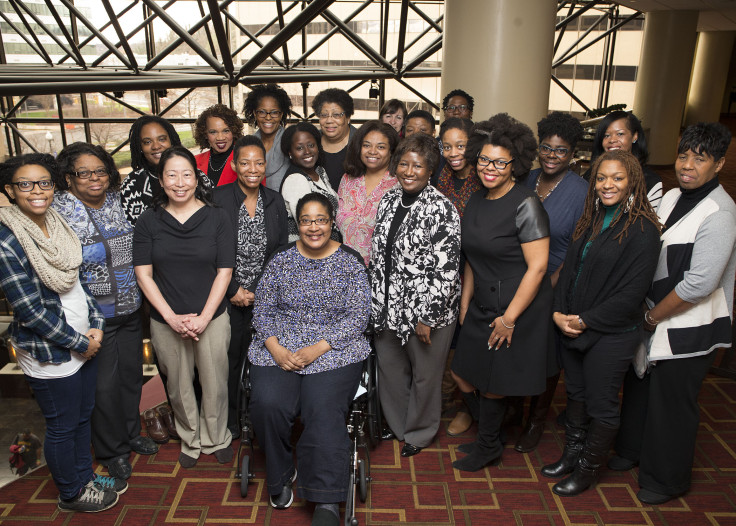2018 was an incredible year for women of color innovators around the U.S., the world, and in particular, Washington, D.C. The boys’ club got shaken by women of color innovators who spoke up, spoke out, started companies and invested in others. But this is just the start for lasting change in entrepreneurship.
As we start 2019, here are my top 2018 moments for women of color:
- The rise of funding for women of color: Women of color entrepreneurs do not have equitable access to capital. Fortunately, several funds dedicated to women of color emerged in 2018, supported by and supporting the women of DC. The New Voices Fund announced a $100 million fund for women of color founders. Backstage Capital got in the game with over $36 million to support underrepresented entrepreneurs. And most recently launched, Billion Dollar Fund for Women is a global campaign to invest in women entrepreneurs $100 million by 2020 and $1 billion in the next decade.
- Washington, D.C. is a happening scene for women entrepreneurs: BEACON DC and Black Girl Ventures convened women of color entrepreneurs on an unprecedented scale, strengthening the community and receiving national acclaim. In April, BEACON released the first-ever report blending national and local data on women’s entrepreneurship, Building Inclusive Ecosystems with Intentionality: A Strategy to Enhance Support for DC’s Women Founders. And Black Girl Ventures went national with its disruptive model of a crowdfunded pitch competition to award women of color founders. Since 2016, more than 300 founders have pitched in four cities.
- Allies shake up the industry: I commend the white women allies who turned good intentions into action, supporting women of color. Melinda Gates mobilized a coalition of top tech companies under her initiative Rebooting Representation. This led to a collective $12 million commitment to internal company initiatives to recruit, hire, and retain women of color. We need more companies to commit to this initiative around the country and the world.
These innovations in 2018 will contribute to a revolution for women of color in tech in 2019. But for 2019, it’s all about the #LevelUp in promoting women of color in business and tech. We must all make a commitment to do the following to support women of color:
- Men need to stand up for women entrepreneurs — as colleagues, mentors, advocates, sponsors, and investors. Hedge fund and VC communities, traditionally male bastions, must more consistently promote women of color.
- Innovate with equity in mind. Too much of technology and entrepreneurship solves for convenience rather than everyday problems and access. We must ask ourselves: Who are we building for? Especially in the U.S., our transportation infrastructure is declining while our cities are becoming increasingly expensive. Washington, D.C. itself is a minority-majority and female-majority city. Diverse women and their voices are needed in the smart city revolution. Our input is necessary to develop urban areas that are sustainable and accessible for all, which is achieved by building for those with the least access, the most marginalized — the majority of whom are women. Follow the leads of these women to watch in civic tech and urban planning.
- The disruptors need to be disrupted. The cryptocurrency and blockchain scene is dominated by men at 95 percent. Blockchain has the potential to increase access, transparency and financial independence. It can be a tool for equality. And who stands to benefit the most from equality? Women, the second class, the second half of the world.
My advice to women in the industry: Reach out to a mentor and a sponsor. Mentorship is a start, but actuation occurs with sponsorship. We need to support each other, not just by giving advice, but also by facilitating meaningful connections — brokering disruptive partnerships — forging stronger bonds between us so that we can continue seismic and lasting change.
Before you go...
Please consider supporting Technical.ly to keep our independent journalism strong. Unlike most business-focused media outlets, we don’t have a paywall. Instead, we count on your personal and organizational support.
3 ways to support our work:- Contribute to the Journalism Fund. Charitable giving ensures our information remains free and accessible for residents to discover workforce programs and entrepreneurship pathways. This includes philanthropic grants and individual tax-deductible donations from readers like you.
- Use our Preferred Partners. Our directory of vetted providers offers high-quality recommendations for services our readers need, and each referral supports our journalism.
- Use our services. If you need entrepreneurs and tech leaders to buy your services, are seeking technologists to hire or want more professionals to know about your ecosystem, Technical.ly has the biggest and most engaged audience in the mid-Atlantic. We help companies tell their stories and answer big questions to meet and serve our community.
Join our growing Slack community
Join 5,000 tech professionals and entrepreneurs in our community Slack today!

The person charged in the UnitedHealthcare CEO shooting had a ton of tech connections

From rejection to innovation: How I built a tool to beat AI hiring algorithms at their own game

The looming TikTok ban doesn’t strike financial fear into the hearts of creators — it’s community they’re worried about


